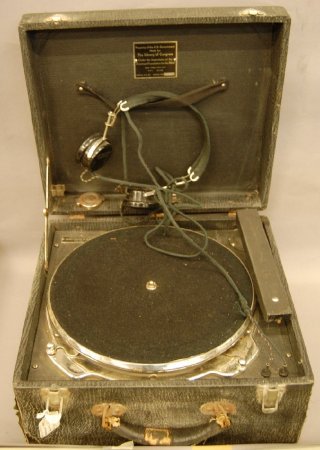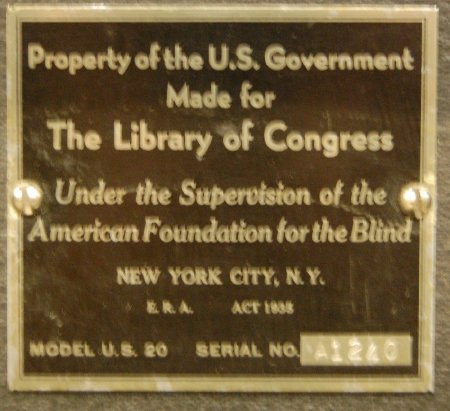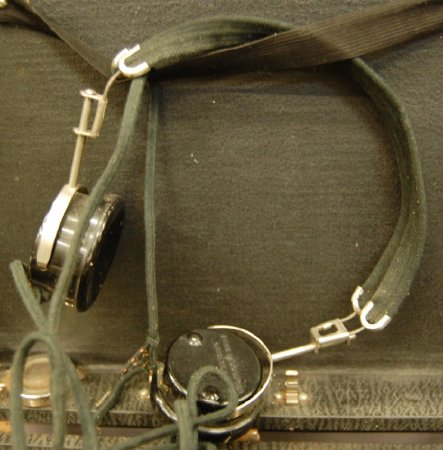Object ID:
2003.145.1-2
Title:
AFB Talking Book Reproducer, Model U.S. 20
Description:
(.1) Wood phonograph case, covered inside and out with black textured leatherette; lid hinged with three curled piano hinges, secured in open position with nickel-steel brace, secured closed with two nickel spring-latches on front, leather-wrapped paper carrying handle on two steel D-rings riveted to case on front; lid stores nickel steel canister of phonograph needles and unknown flat canister with spring-loaded lid; cloth strap in lid to secure headphones; nickel steel turntable with black wool pad, start-stop sliding switch on left, sliding speed switch (FAST-SLOW) on right; rectilinear aluminum tone arm on right, coated with textured black enamel, small thumbscrew on front allows easy change of needle; two headphone jacks on front right of turntable platform; nickel steel spring crank on right with black wood grip; four hard rubber feet on base; on tag in lid, "Property of the U.S, Government/Made for/The Library of Congress/Under the Supervision of the American Foundation for the Blind/New York City, N.Y./E.R.A. ACT 1935, Model U.S. 20, Serial No. A1240" (.2) Includes one pair of headphones stored in the lid and held in place by an elastic strap.
Dimensions:
H-9.5 W-15 D-21.25 inches
Date:
ca. 1935
Made by:
American Foundation for the Blind, Trimm Radio Corporation
Place of Origin:
New York
Provenance:
Congress amended the Pratt-Smoot Act in 1933 to allow the Library of Congress to buy and distribute Talking Books to blind adults on the same basis as braille. Initially, the American Foundation for the Blind launched a fundraising campaign to purchase Talking Book machines for users nationwide. In 1935, however, the Foundation managed to convince President Franklin Roosevelt to sign an order allocating WPA funds to the LC for the construction of TB players. In turn, the LC appointed AFB as its agent to supervise the project. The project director was Chester C. Kleber. By the time it was discontinued in 1942, AFB had produced 23,000 machines in several formats, both electric and spring driven. This machine, a version of the original S-10 spring driven model, was entirely portable, important in a nation where vast rural areas still lacked electricity. The listener used headphones.
Credit Line:
Museum Purchase, 2003.145


